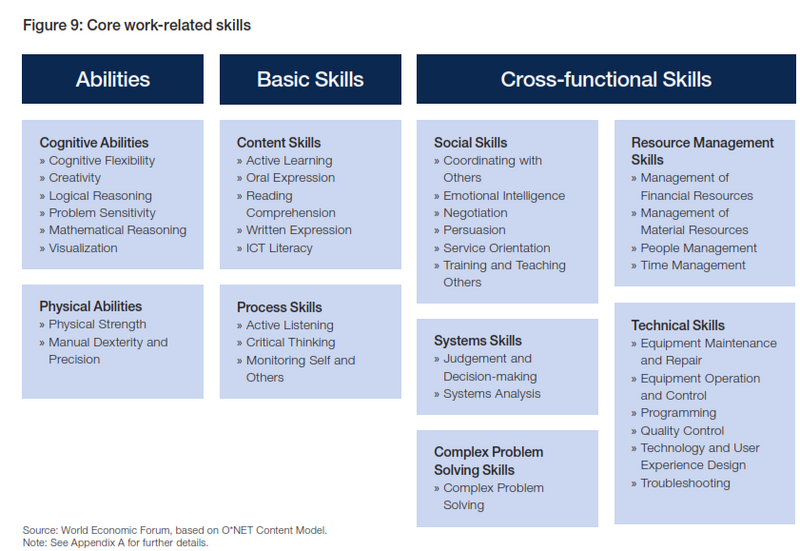ATD Blog
The Future Is Now: Transformation of Work and Skills
Thu Aug 25 2016

Ben Schiller calls it the post-work economy. It’s a perfect storm of recent and ongoing technical, socioeconomic, geopolitical, and demographic changes. These drivers have changed the world’s economies, organizations, the workplace, and jobs.
Like previous industrial revolutions, these changes are causing difficult adjustments. As in the past, some jobs are being destroyed and others are being created. What is different in this situation, many say, is that only those with the right skills appear to be benefiting. In past industrial revolutions, benefits eventually spread to all, or at least most. Today, it appears that those with the niche skill sets that match growing needs are benefiting. Others find themselves falling further and further behind.
The impact is larger than most realize. Organizations should consider how these large changes in jobs and skills are going to affect them and their need for skilled workers in the near future.
Skill Instability
Because of ongoing and escalating technical, socioeconomic, geopolitical, and demographic changes, industries are rapidly adapting to meet demand, creating the need for swift reskilling. One example is the response to the Internet of Things in multiple industries. For instance, smart thermostats create a need for some IT skills for plumbing and heating contractors, just as computerization in automobiles did for auto mechanics a number of years ago.
Job Losses and Changes
In his MIT Technology Review article, “How Technology Is Destroying Jobs,” David Rotman describes how technology has simply taken over some kinds of middle-class work, including bookkeeping, clerical work, and other tasks such as placing and pulling stock in warehouses and dispensing pills in pharmacies. One of the new cruise ships has an automated bartender.
Highly paid work isn’t exempt. Medical technology is increasingly involved in making medical diagnoses; Johnson & Johnson created an FDA-approved automated sedation system for use in procedures such as colonoscopies. Some of the tedious document review done by lawyers and paralegals can now be done by systems that scan carefully for mentions of items or terms.
Rotman writes that some jobs, especially those aided by computers and technology, are thriving. Lower-paid, lower-skill service jobs in restaurants and home health, which cannot be automated, are also thriving. The problem is that conventional middle-class jobs are declining and what is left are the two ends: highly technical jobs and low-paid, low-skilled jobs. So while employment numbers may look OK, the middle is being hollowed out.
Changing Work Skills
In addition to jobs themselves changing, the actual skills in jobs are changing, according to research. The World Economic Forum’s (WEF’s) Future of Jobs Report found that by 2020, more than a third of the core job skills of most occupations will be skills that aren’t considered core skills today. The ability to apply technology is already an expected skill at certain job levels. The ability to work with data and make decisions based on data will be increasingly needed as digital information becomes even more available.
Figure 9 from the report shows the scope of core skills expected to be needed in 2020. The report also breaks down skills by industry and, as expected, there are differences. For example, consumer-facing industries will need to anticipate changes to consumer values and rapidly translate these changes into product offerings. Industries that are or will soon be highly automated will be able to use technology rather than human thinking for complex problem solving.

Source: World Economic Forum. 2016. Future of Jobs Report. World Economic Forum. http://reports.weforum.org/future-of-jobs-2016. Used with permission.
The WEF findings are reinforced by a 2012 report from Society for Human Resource Management and Achieve. Looking three to five years into the future, respondents expect more jobs will require specific technical requirements and more than 30 percent expect more STEM-related jobs. Almost 50 percent expect most jobs to require a higher education degree.
History shows there is often a mismatch between talent needs and government policy and education. The pace of change is escalating and businesses cannot wait for institutions to meet the needs for skilled workers. Organizations who aren’t working to create a pipeline for the skilled workers they need may very well have difficulties surviving.
References
Achieve and the Society for Human Resource Management. 2012. The Future of the U.S. Workforce. Achieve, November 13. www.achieve.org/future-us-workforce.
Lawrence Mishel, L., J. Bivens, E. Gould, and H. Shierholz. 2012. The State of Working America. 12th edition. Economic Policy Institute, November. www.stateofworkingamerica.org.
Rotman, D. 2013. “How Technology Is Destroying Jobs.” MIT Technology Review, June 12. www.technologyreview.com/s/515926/how-technology-is-destroying-jobs.
Schiller, B. 2016. “Welcome to the Post-Work Economy.” Fast Company, March 15. www.realclearpolicy.com/2016/03/15/welcome\_to\_the\_post-work\_economy\_30185.html.
World Economic Forum. 2016. Future of Jobs Report. World Economic Forum. http://reports.weforum.org/future-of-jobs-2016.
